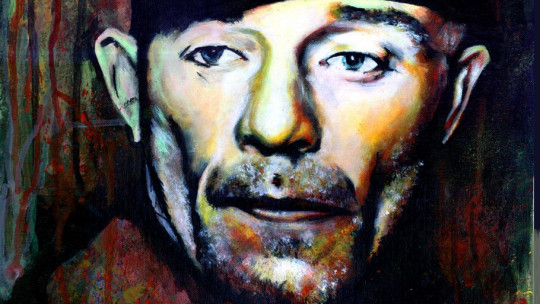Multiple personality or dissociative identity disorder (DID) It has been dealt with recurrently in fiction. The novel “The Strange Case of Dr. Jekyll and Mr. Hyde”, by Robert Louis Stevenson, and the film “Psycho”, by Alfred Hitchcock, influenced a large number of subsequent works, especially in American cinema.
Multiple (Split), the latest film by M. Night Shyamalan , screenwriter and director of “The Sixth Sense” and “The Visit”, is the most recent example of the use of multiple personality in fiction. However, there is great controversy regarding films that use DID to tell stories about violence and madness, and about the very existence of the disorder.
https://www.youtube.com/watch?v=L_K9KcxJtVA
Dissociative identity disorder
According to the DSM-IV-TR, in dissociative identity disorder two or more identities coexist in one person These personalities alternately control thought and movements and may have different memories and thoughts, so each alter ego does not necessarily have the same information as the rest.
Multiple personality would be due to disturbances that would prevent the normal development of identity , rather than the breakdown of a formed personality. While the primary identity of people with DID is usually passive and depressive, the rest tend towards dominance and hostility.
Fine attributes dissociative identity disorder to a hypnosis-like suggestion process that causes selective amnesia. Nevertheless, personalities can be hierarchical so that some control the rest and can access their memories and thoughts. The change from one identity to another is usually attributed to varying degrees of stress.
Likewise, different identities can interact with each other, come into conflict and manifest to others as hallucinations visual or auditory; References to alter egos as voices are typical. This may suggest certain similarities between multiple personality and psychotic disorders such as schizophrenia.
Dissociative identity disorder It is diagnosed more frequently in women than in men. Women also tend to have more personalities. In general, people diagnosed with multiple personalities have between 2 and 10 different identities.
The controversy surrounding DID and dissociation
Dissociative identity disorder is considered to be an extreme manifestation of post-traumatic stress disorder. In these cases there has usually been a childhood trauma, usually parental abuse or neglect The symptoms occur as a defense against emotions and sensations that the minor is not able to consciously manage. It is also common for it to occur together with depressive disorders, borderline personality disorder and addictions.
In general, the symptoms of DID are attributed to either dissociation or simulation One fact that seems to reinforce the perspective that multiple personality is fake is the fact that it is diagnosed much more frequently in the United States, where the majority of films that revolve around this phenomenon have been produced.
There are those who claim that dissociative identity disorder is a chimerical diagnosis used only by Psychoanalysis, which in many cases is condemned from other orientations arguing that it generates false beliefs in patients.
The term “dissociation” refers to the disintegration of mental life : consciousness, perception, memory, movement or identity. Dissociation, proposed at the end of the 19th century by Pierre Janet, was used by classical theorists of psychoanalysis to explain hysteria.
Even today, dissociation is frequently used as an explanatory construct. Cognitivist-oriented authors such as Hilgard and Kihlstrom affirm that the human mind is perfectly capable of causing dissociative phenomena such as multiple personality through a brain process similar to hypnosis focused on consciousness or memory
Kevin’s 23 personalities in “Multiple”
(Warning: this section contains moderate spoilers.)
Multiple is a psychological thriller in which a man named Kevin kidnaps three teenage girls , apparently with the intention of using them to feed an imaginary or real being known as “the Beast.” In Kevin, 23 personalities coexist, but the ones we see during most of the film are the most hostile and dangerous, who have managed to take control of his body, replacing the more adapted identities.
The leading actor, James McAvoy , puts himself in the shoes of 9 different characters during the film. Those who interact the most with the kidnapped young women are Dennis, a man with obsessive-compulsive disorder who enjoys watching naked girls dance, Patricia, a disturbingly cordial woman, and Hedwig, a nine-year-old boy who has a lisp – and who is a big fan of Kanye West’s music. These three rejected identities are known to the rest as “the Horde.”
Much of the film’s tension, especially during the first few minutes, lies in the fact that, like the three girls, the viewer never knows which of the identities will take control next, or when.
Dissociative identity disorder in film
As Kevin’s identities describe, all of them They wait sitting in a dark room until Barry, an extroverted and sensitive man who is the dominant personality, “gives them the light”, that is, allows them to control the body they share. Patricia and Dennis, the “undesirable personalities”, are prohibited from seeing light due to the danger they pose.
On the other hand, little Hedwig, who is also rejected by most identities, has the ability to be “in the light” whenever she wants. Hedwig represents a regression to childhood which occurs at times when Kevin cannot face the reality of his actions; It is interesting that, in the personality structure of the protagonist, these regressions take priority not only over “healthy” personalities, but also over violent desires.
Of the personalities accepted by Kevin’s conscience, the ones we come to know during the film are Barry, already mentioned, Orwell, a man obsessed with history and who speaks in a grandiloquent way, and Jade, the only one of all the identities who He has diabetes. These alter egos maintain a kind of alliance with those who do not appear; together they have managed to keep “the Horde” out of conscious experience, or at least out of Kevin’s control, until shortly before the plot of Multiple begins.
Barry and his allies regularly visit a psychiatrist, Dr. Fletcher. She maintains the hypothesis that people with multiple personalities They can alter your body chemistry through autosuggestion, due to the beliefs that each of the identities maintains about their own nature. For the psychiatrist, people with DID can develop “human potential” to a much greater degree than those who do not have the disorder.
Is the plot realistic?
Many of the characteristics of Kevin’s disorder are based on the diagnostic criteria and clinical course typically described for dissociative identity disorder. Alternative identities begin to develop due to the physical abuse that the protagonist receives as a child on their mother’s side, particularly the most hostile ones, who hold a grudge against the others because they were the ones who endured the suffering during those moments.
In both post-traumatic stress disorder and DID, it is common to refer to experiences of dissociation that took place during traumatic moments ; This would establish the habit of using dissociative mechanisms to escape from reality in moments of intense stress. The well-known pianist James Rhodes, author of the autobiographical book “Instrumental”, refers to similar dissociative experiences but without the presence of multiple personalities.
Kevin’s personality structure is quite consistent with those of cases diagnosed as multiple personality. The different identities are hierarchical so that some of them (or at least Barry, the dominant personality) can access the memories of the rest, while, for example, the child Hedwig is completely unaware of the thoughts of the others. These differences in access to mental content generate the memory gaps of each of the identities.
A priori, the possibility of altering neurobiology based on personality state is one of the least credible aspects of the film. However, on many occasions people with multiple personalities not only claim that their different identities have different mental disorders, as is the case with Kevin’s selective OCD, but also that some can be right-handed and others left-handed, some need glasses and others do not. , etc.
As we said at the beginning of the article, a large number of professionals question the testimonies and studies that support these possibilities. In any case, in Multiple Shyamalan uses the disorder as an excuse to play with the boundaries between reality and fiction as he has done throughout his filmography.
Controversy around multiple personality films
The film Multiple has been criticized by groups working for mental health, such as the Australian association SANE, and online petitions have been registered against it. These platforms warn that Múltiple and other similar fiction products, particularly coming from Hollywood, are harmful to people with mental disorders complex. They argue that people who have no more information about the disorders than what they get through movies are led to think that people who suffer from them are dangerous and aggressive in nature.
Although it is important to know how to separate reality from fiction and understand that cinema is still entertainment, it is true that the repeated use of multiple personality disorder in horror films has transmitted a biased image of it – in case such a thing really exists. diagnostic entity.









